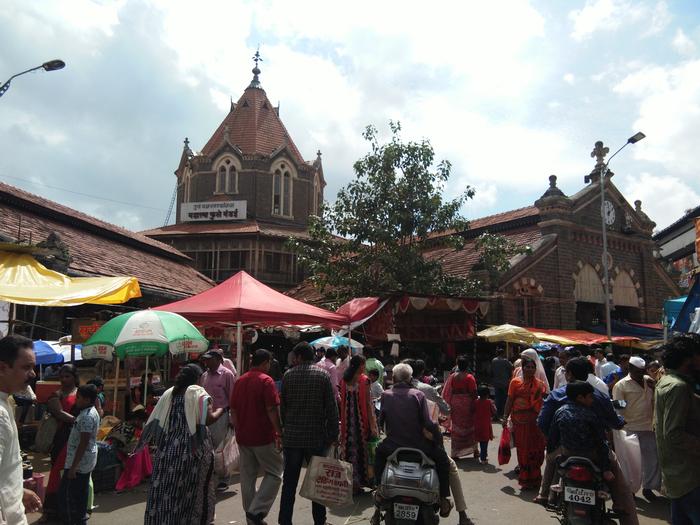Madhura Vaze and Nabha Joshi - ProposalPUBLIC MARKETS: BUILDING COMMUNITY, BUILDING ECONOMYBeing students studying the building blocks of society, we were highly intrigued by the question posited and decided to seize the opportunity to carry out this practical experiment of analyzing and inquiring into basic functional civic processes. This opportunity has given us the chance to explore our respective fields for which we are extremely thankful. India is an agrarian country where markets and commercialization of agricultural production work in tandem. Right from the British era, certain structures were earmarked where people from different strata of society could converge and be facilitated with the perfect environment for fostering fair trade. Nowadays, the gated communities are leading to fragmented communities with the privatization of public spaces. Markets are the soul of communities that allow free expression leading to honest interaction and gradual development of social relationships resulting in the well-being and stability of the community. Pune, located in the state of Maharashtra is one of the most culturally rich and progressive cities of India. It has inherited some beautiful architectural structures which are both aesthetic and functional. The economy of Pune has its roots in market places. As Roth says, farmers’ markets are “proven business incubators” that have “helped to revitalize urban centers and bring back a sense of community” (1999). At the heart of Pune, a gigantic octagonal building stands tall hosting a huge eight-acre retail vegetable and fruit market. This Gothic style market was built by the British in the 1880s, formally renamed as “Mahatma Phule Mandai” from “Lord Reay Market” and is now commonly known as “Mandai”. It has a traditional stone and wooden structure attenuating the intense light and allowing cross ventilation through eight entrances. It is a vibrant and lively place surrounded by vendors selling everything from clothes to utensils to special festive goods. This heritage site dwells in the hearts of the commoners and is looked at as an auspicious place to carry out traditional, cultural, religious and political programs. A distribution of vendors took place and led to efficiency in the local commerce. The advancement in the economy attracted more vendors and soon created the problem of encroachment of space and revenue shares. The vendors from the original setting started moving out of the building to increase accrued sales, leading to a greater infraction. Addressing this problem, In the 1960s a need for a bigger and a different location for such trade was realized and hence, “Market Yard” was constructed. It is a modern commercial fruit and vegetable market, designed in an oval shape to ensure a smooth flow of vehicles, goods, and people. It flaunts its colorful facades and the louvers act as a protective device. It is easily accessible from all the nearby villages through highways. The platform allows people to carry out informal gatherings. Mandai and Market Yard, coincide on various economic, administrative and managerial factors. Both these settings have a climate-responsive architecture, high communal satisfaction, act as transportation hubs and contribute to economic growth. A unique sense of discovery, festivity, diversity, transformations and permanence within the community leads to the success of these markets. Community is highly complex and represents every layer of the society while architecture is in a permanent inter-dependency with the community. The civic architecture succeeds with the value to the community. In India, the industrialization of the building industry has not yet made great headway, for there is a lack of technological infrastructure to support it and the absence of ‘architecture-for-all’ in the independent country has rarely had a public or social agenda. While designing a successful civic structure, the community issue is to be approached by specialists from various fields. The future focus needs to be on creating civic structure facilitating community needs as per the dynamic social, political, economic factors. Additional Help and InformationAre you in need of assistance? Please email info@berkeleyprize.org. |
|


